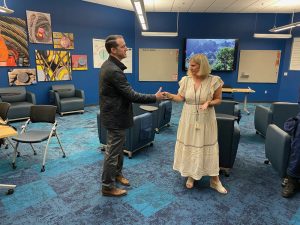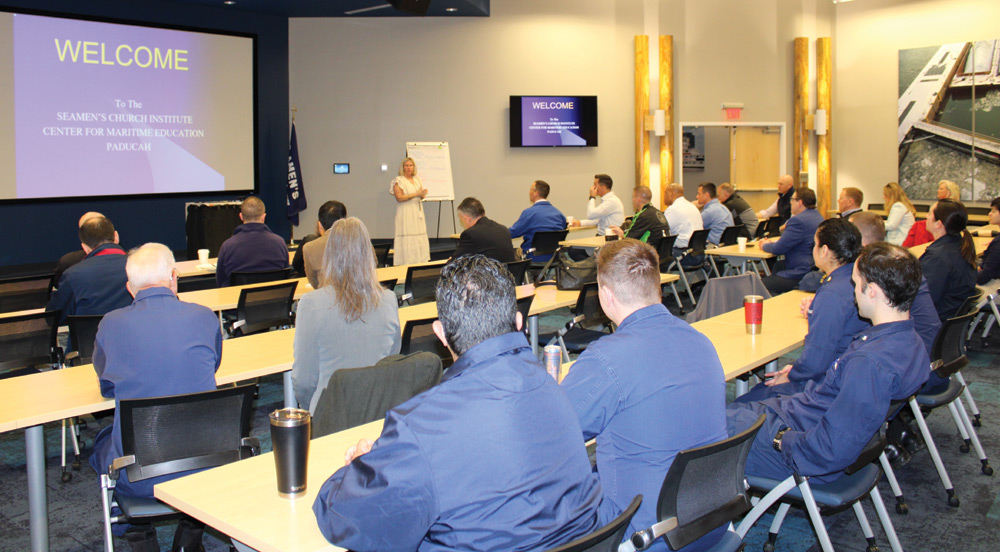Sixteen students and an instructor from the National Defense University’s (NDU) Eisenhower School for National Security and Resource Strategy got a first-hand look at the country’s rivers and towboats during a two-day transportation and logistics field trip that focused on the inland waterways.
Students from the NDU program, based at Fort McNair in Washington, D.C., visited Pine Bluff Sand & Gravel’s Nashville facility and rode a Hines Furlong towboat. They also toured Fort Campbell, Ingram Barge Company’s Paducah, Ky., training facility, Kentucky Lock and Seamen’s Church Institute’s (SCI) Center for Maritime Education, among other sites, as part of the trip March 28 and 29.
Waterways Council, Inc. (WCI) arranged the stopping points on the tour, designed to provide a primer on inland waterways transport, and was honored to do so, WCI senior vice president Deb Calhoun said. While WCI has provided information for more than a decade on the inland waterways sector to NDU students taking the 10-month, master’s level national security resource and strategy course, field trips vary each year among different transportation modes, and it was the group’s first trip to Paducah, said Steven Dubernas, professor of transportation and logistics industry study.
At the Center for Maritime Education, students split into four groups to try their hands at the sticks of a towboat simulator, navigating a tow underneath a bridge in Memphis, Tenn. They also learned about SCI’s mission and toured the simulator control room.
Dubernas said students wanted to hear about how the inland waterways industry can remain healthy from an economic development standpoint and also how it could aid in national security in a time of need.
The students came from all branches of the military, both active duty and reserve, along with international fellows from both Japan and Armenia. Each year the course includes one field trip within the United States and one international trip, Dubernas said.
Through the field trip, Dubernas said students had come to appreciate the inland waterways’ key position in supporting national supply chains, including the movement of construction materials and agricultural exports. He also said they were interested in how recent federal legislation, including the Infrastructure Investment and Jobs Act, was being used to support aging river infrastructure.

U.S. Army Reserve Lt. Col. Jason Halligan of Lexington, Ky., said one of the things that stood out for him on the tour was the need for a regional approach and a “network view” of the system.
“One decision in action affects everyone else,” he said.
He also was impressed by the river system’s capacity for increased use and that it is more environmentally friendly to transport goods using the river system than by other modes of transportation. Halligan said he never previously had such a comprehensive view of how the system operates and believes industry should take a closer look at moving what products it can via the river system.
“I don’t know where else we’d get an opportunity to talk to all these different stakeholders,” he said.
Halligan also expressed thanks to all of those who allowed students to gain first-hand knowledge.
“Everyone has welcomed us with open arms,” he said.




